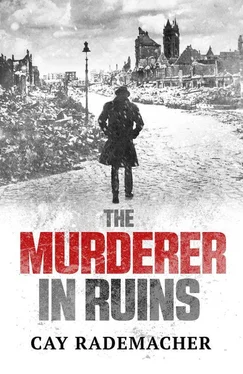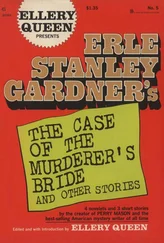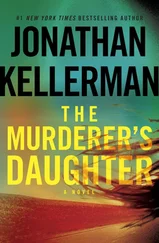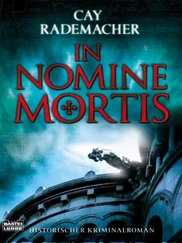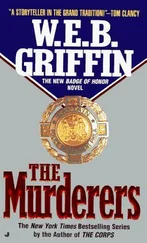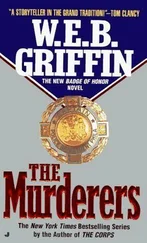Cay Rademacher - The Murderer in Ruins
Здесь есть возможность читать онлайн «Cay Rademacher - The Murderer in Ruins» весь текст электронной книги совершенно бесплатно (целиком полную версию без сокращений). В некоторых случаях можно слушать аудио, скачать через торрент в формате fb2 и присутствует краткое содержание. Год выпуска: 2015, ISBN: 2015, Издательство: Arcadia Books Limited, Жанр: Триллер, на английском языке. Описание произведения, (предисловие) а так же отзывы посетителей доступны на портале библиотеки ЛибКат.
- Название:The Murderer in Ruins
- Автор:
- Издательство:Arcadia Books Limited
- Жанр:
- Год:2015
- ISBN:9781910050750
- Рейтинг книги:5 / 5. Голосов: 1
-
Избранное:Добавить в избранное
- Отзывы:
-
Ваша оценка:
- 100
- 1
- 2
- 3
- 4
- 5
The Murderer in Ruins: краткое содержание, описание и аннотация
Предлагаем к чтению аннотацию, описание, краткое содержание или предисловие (зависит от того, что написал сам автор книги «The Murderer in Ruins»). Если вы не нашли необходимую информацию о книге — напишите в комментариях, мы постараемся отыскать её.
The Murderer in Ruins — читать онлайн бесплатно полную книгу (весь текст) целиком
Ниже представлен текст книги, разбитый по страницам. Система сохранения места последней прочитанной страницы, позволяет с удобством читать онлайн бесплатно книгу «The Murderer in Ruins», без необходимости каждый раз заново искать на чём Вы остановились. Поставьте закладку, и сможете в любой момент перейти на страницу, на которой закончили чтение.
Интервал:
Закладка:
He liked the pathologist. The man’s name – pronounced ‘Chisini’ – had made him the brunt of jokes in the years after 1933, mostly threatening references to his Polish origins. Czrisini worked fast. He was a bachelor whose only two passions were corpses and cigarettes.
‘Are you thinking the same as I am?’ the doctor asked.
‘Rape?’
Czrisini nodded. ‘Young, pretty, naked and dead. It all fits.’
Stave shook his head from side to side. ‘At minus 20 degrees even the craziest rapist might get a bit worried about his favourite tool. On the other hand, he could have done the deed somewhere warmer.’ He nodded towards the drag marks. ‘She’s just been laid out here.’
‘We’ll only find out more when we’ve got her laid out on my dissection table,’ the pathologist replied cheerfully.
‘But not her name,’ Stave muttered to himself. What if the killer didn’t strip her out of murderous lust? But as a cold, calculated decision? A naked woman in the middle of ruins where nobody has lived for years: ‘It’s not going to be easy to identify her.’
Not long after, the crime-scene officer turned up. He was also the official police photographer; CID didn’t have enough trained specialists. Stave pointed out the drag marks. The photographer bent down over the body. As his flash went off, Stave suddenly saw in his mind’s eye anti-aircraft fire from the roads, the brightly lit, slowly falling parachute flares the first British aircraft used to mark targets for the bombers coming behind them. He forced his eyelids closed.
‘Don’t forget the drag marks,’ he told the man again. The photographer nodded, silently; Stave had sounded angrier than he had intended.
Finally he had the police bring over the two young lads who had found the body: barely ten years old, pale, blue lips, shivering, and not just from the cold. Orphans. Stave wondered for a moment whether he should play the stern policeman, and quickly decided against it. He leaned down towards them, asked them their names in a friendly voice and told them there was no need to be frightened for being out on the streets so early.
Five minutes later he knew all there was to know about the case. The pair had lit out before breakfast to look for machine gun or flak cartridges. Every day there were kids out there finding live munition amidst the rubble, but there was no point in warning the two off. Stave could remember his own childhood. He would have done exactly the same thing. And what good would it have done if some adult had told him not to? Instead he asked them if they often came out her looking for things. They both said nothing for a bit, then shook their heads hesitantly: no, this was the first time. None of the other children had ever done it either. The St Matthew Foundation had only just started taking in children again. Stave took the two kids’ names and then sent them back to the orphanage.
‘Damn shame they’ve just moved here,’ he said, looking at the pathologist who was watching two porters carry the body off on a stretcher.
‘You mean you have nobody to prove that the body was left here only last night. You have to depend on me,’ Dr Czrisini said matter-of-factly, though there was a note of self-satisfaction in his voice.
Stave shot a questioning look at the scene-of-crime man who was going over the ground in ever widening circles.
‘Nothing,’ he replied. ‘No bits of clothing, not even a cigarette butt, no footprints, no fingerprints, and certainly no lengths of wire. But we’ll go over the whole ruined block.’
At that moment Ruge came clambering over the rubble, a little out of breath. ‘Those goddamn doctors in the hospital…’ he began.
‘Spare me the details,’ Stave said, waving whatever the man had to say wearily away. ‘Did you get through or not?’
‘Yes, after some lengthy discussion,’ the young policeman said, suppressed anger in his voice.
‘And?’
The policeman looked at him for a moment as if he didn’t know what he meant, then suddenly got it: ‘We – you, I mean – have to report to Herr Breuer as soon as you’re finished here.’
Stave didn’t reply. Carl – ‘Cuddel’ – Breuer had been appointed CID chief the year before. He was 46 when the British appointed him, young for the job. In the ‘brown days’ under the Nazis, he had been considered a Social Democrat and as a result vanished for part of 1933 into Fuhlsbuttel concentration camp, though he was later left in peace. After his appointment he had cleaned out all the Nazis and insisted on precision and professionalism from all his officers. Stave wondered why Cuddel wanted to see him right at the beginning of an investigation. It wasn’t like him. It must be something important, he thought. But what? Aloud he told Ruge, ‘We’re going to look around here for a bit yet. Then we’ll drive back to headquarters.’
The chief inspector spun on his heel. Ruins, everywhere he could see. The only other thing, beyond the railway track, several hundred metres away, was the vast concrete cube of Eilbek bunker: a seven-storey-tall monolith with walls up to six metres thick. The Nazis had built nearly seven dozen such bunkers during the war. They had been the only shelter for tens of thousands of people throughout the incessant bombing. They were indestructible, windowless fortresses, emergency accommodation for those whose homes had been bombed, for refugees and others with nowhere to go. Nobody knew for sure how many people lived in them, crammed together in a foul atmosphere of noise, dirt and their own stench.
‘Well, nobody will have seen anything from their windows, that’s for sure,’ the young policeman said, following Stave’s glance.
‘If I had to live in one of those shitholes,’ the chief inspector growled, ‘I’d only go there to sleep and would spend the rest of the time in the open air, even at these temperatures.’
Ruge realised what was on the chief inspector’s mind. ‘We could drive most of the way there,’ he said, hardly thrilled by the idea.
‘Good,’ Stave said. ‘Let’s go and have a little chat with the bunker people.’
Back through the rubble, across the train tracks, then along the wasteland of road, driving carefully to avoid the obstacles. It took them nearly a quarter of an hour trundling over the cobbles of little Von-Hein-Strasse, which seemed to be squashed into the earth by the great bulk of the bunker. Stave climbed out of the Mercedes and looked around. Next to the bunker were just ruins, but opposite, miraculously preserved, were two great car repair shops: huge barracks, locked up at present since there were no cars to repair. Behind them was a small park by the side of a stream, thought most of the trees had been burnt down or chopped to stumps by people looking for wood.
The north-east wind blew in his face. A one-legged man who was swaying on crutches, walking into the wind, vanished into the bunker. Stave followed him. The entry was a little walled-in concrete hut by the side of the great concrete cube. The steel door still had a sign with air-raid warning instructions. Inside there was a steel spiral staircase, and air like that in a U-boat: heavy, muggy, damp. Water ran down the fissures in the concrete. It stank of sweat, disinfectant, damp clothing, coal and mildew.
The stairs led into the core of the bunker. Up one floor to where a Roman numeral in dirty oil paint on a steel door marked the first level. Stave looked at the scribbled paint line, the pale, melted paint that in the light of a naked 15-watt bulb looked like scarred human tissue. Beyond the door lay a labyrinth of walls made of rough wooden boards, with which the inhabitants separated off their tiny ‘apartments’, each of which housed four, six or even more people. There were jackets and wet raincoats hanging on nails. Somewhere in the distance a child cried inconsolably.
Читать дальшеИнтервал:
Закладка:
Похожие книги на «The Murderer in Ruins»
Представляем Вашему вниманию похожие книги на «The Murderer in Ruins» списком для выбора. Мы отобрали схожую по названию и смыслу литературу в надежде предоставить читателям больше вариантов отыскать новые, интересные, ещё непрочитанные произведения.
Обсуждение, отзывы о книге «The Murderer in Ruins» и просто собственные мнения читателей. Оставьте ваши комментарии, напишите, что Вы думаете о произведении, его смысле или главных героях. Укажите что конкретно понравилось, а что нет, и почему Вы так считаете.
